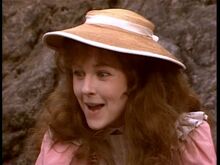
The Fourth Man is a short story, written by Agatha Christie.
Plot
Canon Parfitt manages just to catch his train on time for a night journey. In his first class carriage he is reacquainted with Sir George Durand, a famous lawyer. A third man in the carriage introduces himself as Dr Campbell Clark, an eminent physician who is an expert on conditions of the mind. There is a fourth man with them who appears to be asleep.
The three other men, confessing to various degrees of insomnia talk through the journey. Their conversation covers the idea that a body can house more than one soul and Dr Clark cites the case of a French girl called Felicie Bault. She was a Brittany peasant who, at the age of five, lost her parents when her father in a drunken rage strangled her mother and he was then transported for life. She was taken into the care of a Miss Slater, an English woman, who ran a charity orphanage in the area. Felicie was slightly backward and brutish-looking and Miss Slater had an uphill task to teach her the rudiments of reading and writing. In later years she had one maid's job after another due to her perceived stupidity and laziness. Suddenly, at the age of twenty-two, a change came over her. Following a mental illness she split into three or four distinct personalities. The first was the continuation of her known self but the second was cultured and educated, able to play the piano and speak two foreign languages. The third had the second's education but also knew of the coarser side of life and the less respectable side of Parisian society. The fourth seemed dreamy and pious but was suspected to be the third putting on an act. The change in the personalities occurred after a severe headache and a deep sleep and left her with no recollection of the other personalities. The end of the story came when she was discovered dead in bed one morning, somehow having strangled herself with her own hands.
At this point, the fourth man in the carriage laughs and joins in the conversation. He speaks with a foreign accent and tells them that Felicie’s case in inextricably bound up with that of another girl called Annette Ravel. The two girls and the man himself – Raoul Letardeau – were together at Miss Slater’s orphanage. He was a witness to the bullying hold that Annette had over Felicie that included an incident when Annette seems to have successfully hypnotised Felicie into carrying out an act of which she had no memory. He also saw how much Felicie hated Annette. The latter was an ambitious girl who determined to become a famous dancer in Paris. Raoul left the orphanage when work was found for him that took him abroad for five years. Returning to Paris he saw by chance a poster advertising Annette as singing on the stage and met her in her dressing room. She seemed to have achieved her ambitions but Raoul witnessed the unmistakable signs of consumption and two years later he returned to Miss Slater’s orphanage where Annette had retreated, plainly dying but refusing to believe so. Felicie was also there, serving as a maid, as hateful of Annette as ever but still bullied and humiliated by the ruthless woman who seemed to have a strange hold on her.
Annette died soon afterwards. When Raoul returned six months later he was told by an amazed Miss Slater of the first symptoms of Felicie’s abnormal personality changes. He witnessed one of these and also heard Felicie speak of Annette, "taking...the clothes from your back, the soul from your body" and she was plainly in some terror of the dead girl. Nevertheless, she knew that she had strong hands – should she wish to escape ... The other three are amazed to hear the story and Raoul emphasises how much Annette longed for her life. The doctor had previously said that the body was a residence for the soul. Raoul compares the situation to finding a burglar in one's home.
Characters
- Canon Parfitt
- Sir George Durand
- Dr Campbell Clark
- Miss Slater
- Felicie Bault
- Annette Ravel
- Raoul Letardeau
Tropes and Themes
Publication history
- 1925: The Grand Magazine, Issue 250, December 1925.
- 1933: The Hound of Death and Other Stories, Odhams Press (London), October 1933
- 1947: Ellery Queen's Mystery Magazine, vol. 10 no. 47, Oct 1947.
- 1948: The Witness for the Prosecution and Other Stories, Dodd Mead and Company (New York), 1948
